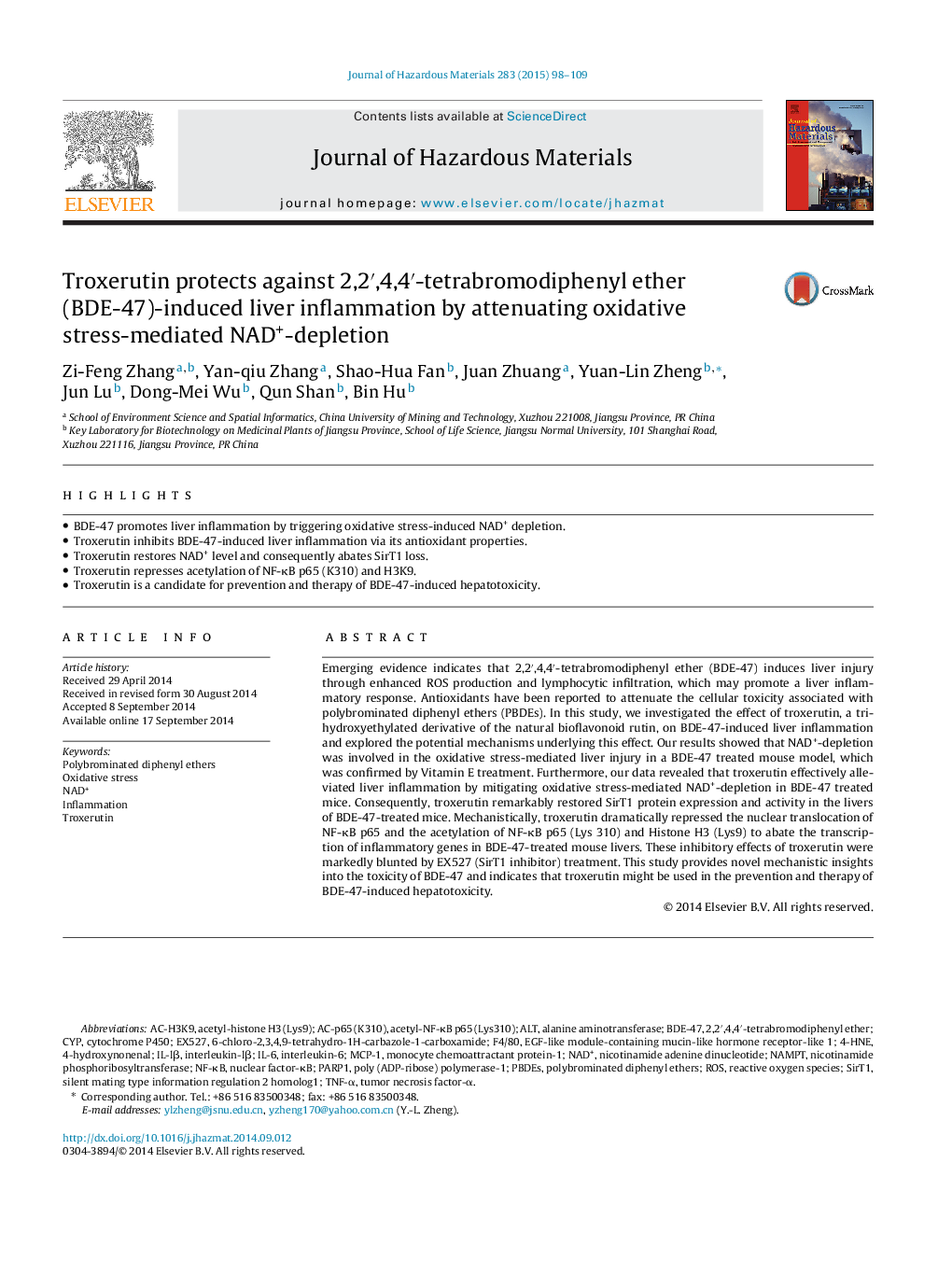| Article ID | Journal | Published Year | Pages | File Type |
|---|---|---|---|---|
| 576249 | Journal of Hazardous Materials | 2015 | 12 Pages |
Abstract
Emerging evidence indicates that 2,2â²,4,4â²-tetrabromodiphenyl ether (BDE-47) induces liver injury through enhanced ROS production and lymphocytic infiltration, which may promote a liver inflammatory response. Antioxidants have been reported to attenuate the cellular toxicity associated with polybrominated diphenyl ethers (PBDEs). In this study, we investigated the effect of troxerutin, a trihydroxyethylated derivative of the natural bioflavonoid rutin, on BDE-47-induced liver inflammation and explored the potential mechanisms underlying this effect. Our results showed that NAD+-depletion was involved in the oxidative stress-mediated liver injury in a BDE-47 treated mouse model, which was confirmed by Vitamin E treatment. Furthermore, our data revealed that troxerutin effectively alleviated liver inflammation by mitigating oxidative stress-mediated NAD+-depletion in BDE-47 treated mice. Consequently, troxerutin remarkably restored SirT1 protein expression and activity in the livers of BDE-47-treated mice. Mechanistically, troxerutin dramatically repressed the nuclear translocation of NF-κB p65 and the acetylation of NF-κB p65 (Lys 310) and Histone H3 (Lys9) to abate the transcription of inflammatory genes in BDE-47-treated mouse livers. These inhibitory effects of troxerutin were markedly blunted by EX527 (SirT1 inhibitor) treatment. This study provides novel mechanistic insights into the toxicity of BDE-47 and indicates that troxerutin might be used in the prevention and therapy of BDE-47-induced hepatotoxicity.
Keywords
ALTinterleukin-lβPARP1NAMPTPBDEsBDE-47MCP-1Sirt1CyP4-hydroxynonenal4-HNEIL-6NF-κB2,2′,4,4′-Tetrabromodiphenyl etherF4/80NAD+ROSAlanine aminotransferaseinflammationinterleukin-6TroxerutinOxidative stresstumor necrosis factor-αPolybrominated diphenyl ethersCytochrome P450TNF-αnuclear factor-κBnicotinamide phosphoribosyltransferaseNAD, nicotinamide adenine dinucleotidemonocyte chemoattractant protein-1poly (ADP-ribose) polymerase-1Reactive oxygen species
Related Topics
Physical Sciences and Engineering
Chemical Engineering
Chemical Health and Safety
Authors
Zi-Feng Zhang, Yan-qiu Zhang, Shao-Hua Fan, Juan Zhuang, Yuan-Lin Zheng, Jun Lu, Dong-Mei Wu, Qun Shan, Bin Hu,
